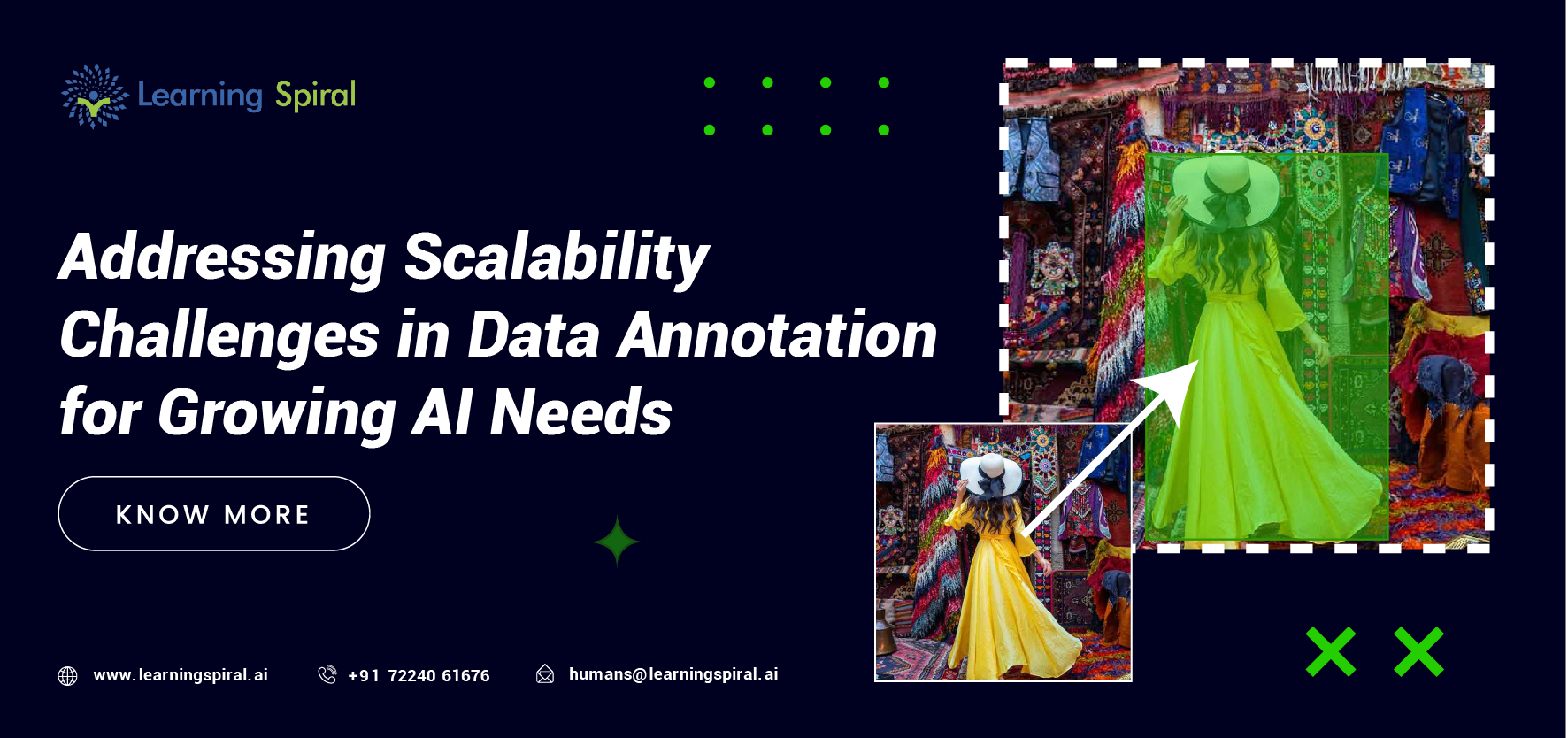
As AI applications enter every facet of our lives, the demand for high-quality, labeled datasets to train these models is skyrocketing. However, to meet these growing needs, the process of attaching labels to raw data presents a unique set of challenges. This is what we know as scalability data annotation, and it comes with its own set of benefits and challenges.
Hurdles in Annotation
One of the biggest hurdles is maintaining quality control. The traditional approach, aka the manual annotation, becomes cumbersome and error-prone as data volume increases. Inconsistency in labeling, subjective interpretations, and human fatigue can significantly impact the accuracy and reliability of the data. This, in turn, translates into poorly performing AI models with unintended consequences.

Another challenge lies in ensuring diversity and bias control. AI models trained on skewed or limited datasets inherit the biases present in that data, leading to discriminatory or unfair outcomes. For example, a facial recognition model trained primarily on images of individuals from a specific ethnicity might struggle to accurately identify faces of people from other ethnicities.
Addressing this necessitates building diverse datasets that encompass a broad range of demographics and cultural nuances.
Furthermore, scaling data annotation often encounters cost and time constraints. Manually labeling massive datasets can be expensive and time-consuming, hindering the rapid development and deployment of AI solutions. This is particularly critical in industries where swift innovation is crucial to maintaining a competitive edge.
Tackling the Challenges
Fortunately, advancements in technology are paving the way for solutions to address these scalability challenges.
Leveraging automation is at the forefront of these solutions. Automated annotation tools, powered by machine learning, can pre-label data, suggest labels based on existing patterns, and even handle repetitive tasks. This significantly reduces the workload on human annotators, improves efficiency, and minimizes errors.
Implementing robust quality control processes is also crucial. This includes establishing clear annotation guidelines, employing double-annotation techniques for verification, and leveraging active learning, where the model identifies data points with the highest uncertainty for human annotation. Additionally, standardized quality metrics and regular audits can ensure consistent and reliable data quality.
Building diverse and inclusive datasets requires a proactive approach. Collaborating with diverse teams of annotators, gathering data from various sources, and employing techniques like data augmentation can help mitigate bias and create more representative datasets.
Cloud-based solutions offer a cost-effective and scalable infrastructure for handling large datasets. Cloud platforms provide the necessary storage, processing power, and collaboration tools to streamline the annotation process and enable geographically dispersed teams to work efficiently.
Conclusion
While scaling data annotation for the ever-growing needs of AI presents significant challenges, a combination of technological advancements, robust quality control measures, and building diverse & unbiased datasets can pave the way for successful development. Hence ensuring the deployment of responsible and effective AI solutions.
By addressing these challenges, we can ensure that AI continues to drive innovation and progress in a sustainable and equitable manner.

